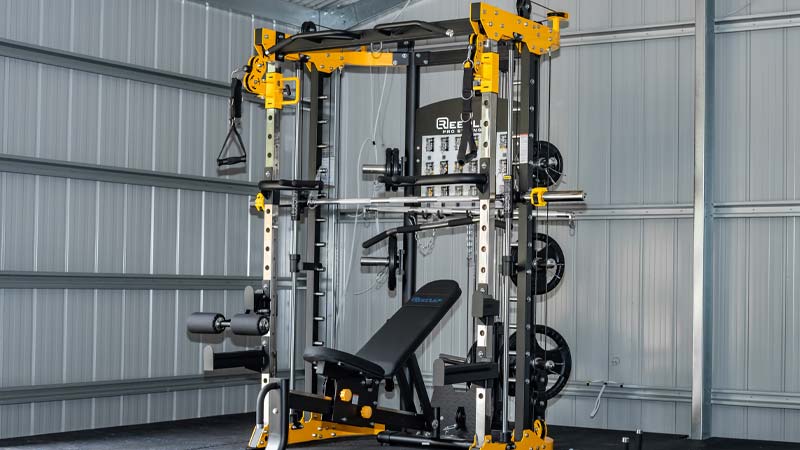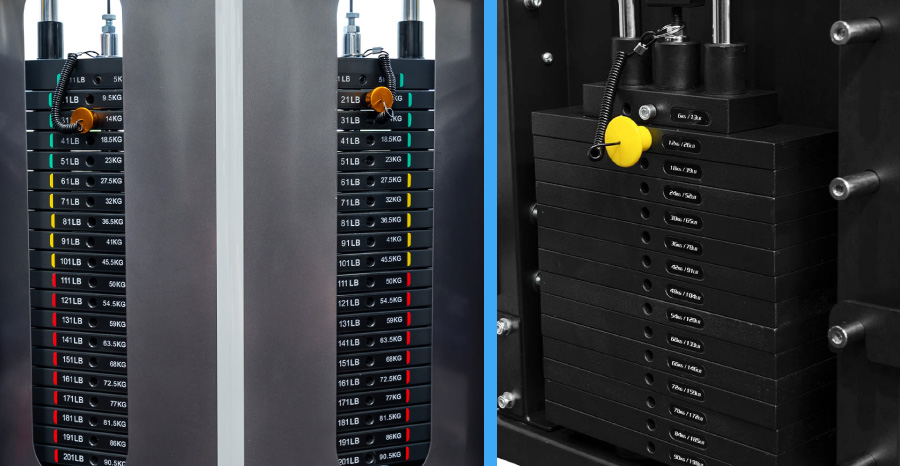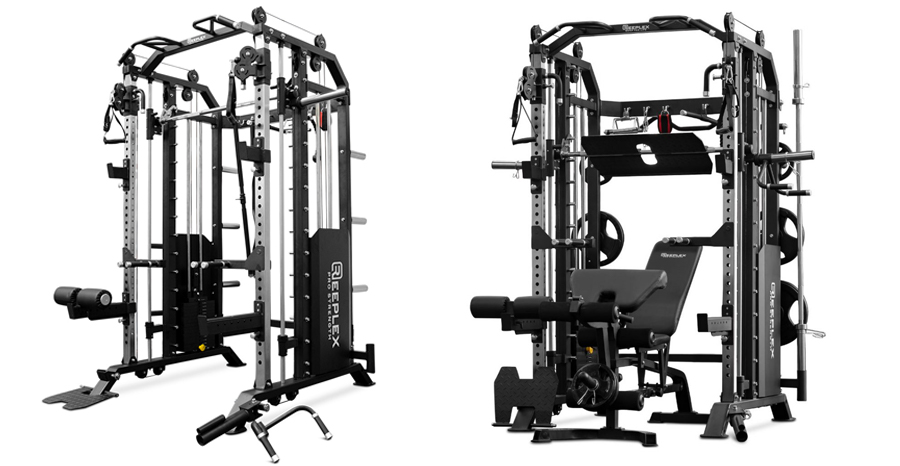
Functional Trainer Buying Guide – 5 Things To Look For
When purchasing a new functional trainer or looking to upgrade your gym equipment, it can be hard to determine which product is right for you. We have put together the top 5 things to look for to find the ideal functional trainer for you and your training goals.
Functionality
A functional trainer should be just that- functional! Although just because an exercise machine has the title “Functional Trainer” does not always mean it can live up to its name. An actual functional trainer should always give options to train multiple muscle groups simultaneously, known as compound exercises.
Ideally, a complete functional trainer should include the following parts:
- Smith machine
- Adjustable dual cables
- Landmine attachment
- Chin-up bar
- J-hooks
- Spotter arms
- Storage for attachments
A full-body workout should easily be able to be completed with diversity and comfort.
A functional trainer allows the user to move in all directions and imitate everyday movements. An advantage of using a functional trainer is that it will enable the user to re-enact movements repetitively, hence why they are very popular with athletes and sporting clubs.
When buying a functional trainer, look at how you are training and why. Can you improve your workout and transition from static exercises to functional fitness with the aid of a machine?
Resistance – Plate Loaded or Pin Loaded what is better?
There is no hard and fast rule regarding how the machine is weighted, although a few differences may affect your workout experience.
Pin Loaded Functional Trainers
Machines that adjust the weight on the cables with a pin are quick and easy to use. The pre-loaded weight stack ranging from 60kg – 90kg is ideal for those wanting a fast-paced workout or super setting. Pin-loaded functional trainers that feature compact steel weight stacks provide a small footprint and are generally heavier, increasing the machine’s total weight for added stability.

Functional Trainers come in a range of pulley ratios, including 1:1 or 2:1
Plate-loaded Functional Trainers
A Plate Loaded Functional Trainer’s most significant benefit is its ability to load with multiple weight plates of different weights. You can start as light as needed or go as heavy as possible, making it excellent for many users. Plate-loaded trainers provide exceptional value for money and allow the same weights to be used on the smith machine as on the functional trainer.
Functional Trainer Design
Aesthetics aside, the layout of a functional trainer can differ and change the workout experience and functionality. For example, cable systems with only a single weight stack limit the range of exercises and reduce the user capacity to one at a time.
A dual-stack gives the option for a more even workout across the body. The dual-stack can be placed on either side of the machine or at the back of the exercise machine. The main difference is where the attachments are stored, which is more of a user preference.
A prominent design feature often neglected in thought until it is too late is how you can use your bench comfortably in the machine. Benches come in all different shapes and sizes, and before purchasing a new functional trainer, you need to check how your bench will function in different positions.
Some functional trainers will have a specific bench to suit the design and layout. If there is an option to purchase such, this is always a good idea, as functionality will be optimum.
Functional Trainer Build Quality – Pulleys / Cables / Frame
What makes for the best functional trainer is its build quality. A great machine must include sealed bearing pulleys allowing a smooth and responsive cable feel. Look for thick PVC-coated rubber cables with a tensile strength of at least 2,000lbs.
When purchasing a functional trainer, ideally, the frame will be constructed with 2-3mm thick steel; this provides maximum support, especially when using the squat rack arms to perform barbell exercises. The hardware of M10 – M12 bolts combined with nylon lock nuts keeps all bolts tight during the most strenuous workouts. A strong frame is only as good as the powder coating and finish, look for a functional trainer that is powder-coated well with an even paint finish and a thick layer with no flaking of paint around the edges of parts.
Additional Extras – What does your Functional Trainer Include?
Ideally, you want the best bang for your buck in price and quality but also exercise variety. Different gym cable attachments, such as D handles and T-bar rows, are available, although check for additional attachments and bars that will complement your workout.
Lat pulldown attachments should have the option to use a knee pad attachment to help stabilise the body while performing heavier lifts. Some machines come with a bar, often referred to as a functional trainer bar, that is the same length as the distance between the pulleys and is helpful for exercises like deadlifts, upright rows, curls, etc.
Generally, all cable attachments should be able to be used on a functional trainer. Suppose your current setup does not include these attachments; when purchasing, look for packages with attachments to the machine. In that case, this will save you money and give you more options for exercise variety from the get-go.
Watch the range of workout videos available on our functional trainers
Need help Selecting the right functional trainer?
Why not visit us at our stores across Australia and buy your desired gym equipment?
Gym Equipment Melbourne Stores
Gym Equipment Sydney Store
Gym Equipment Adelaide Store
Fitness Equipment Perth Stores
Our staff is on hand to help you with any questions about functional trainers. Can’t make it in-store? Then contact us today, and we will answer any enquiry within 24 hours.





